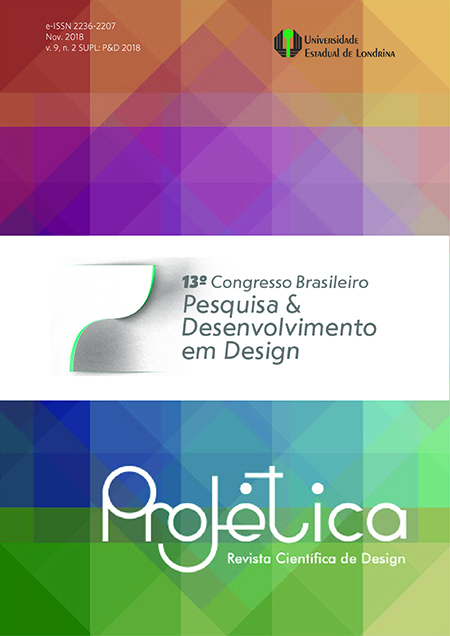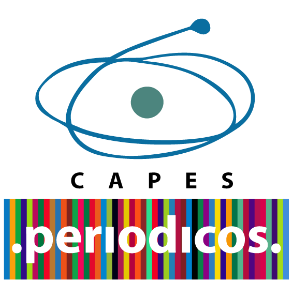Aesthetic-formal composition of product families: generative model using biological analogy
DOI:
https://doi.org/10.5433/2236-2207.2018v9n2Suplp319Keywords:
Design process, Concept generation, Product familiesAbstract
The development of product families requires, on the one hand, the management of assets to meet functional requirements in each product and, on the other hand, the maintenance of the stylistic coherence so that the family is perceived as a whole. That is, the aesthetic unity is recognizable by the user, which is called morphological similarity. This work presents an alternative generation approach based on the principle of heredity of natural genetics, in which successive generations maintain phenotype similarities due to the continuous transfer of information through genetic code - the genotype. In order to do so, the generative model we propose links the patterns of the geometric construction in the morphology of elements within the product family to the elements and structures of Genetics. Thus, they behave as chromosomal units, that is, they can be maneuvered by genetic algorithms and subjected to combination/mutation principles of the biological context.Downloads
References
BURNS, George W. Genética: uma introdução à hereditariedade. Rio de Janeiro: Guanabarra, 1986.
CELANI, Gabriela; CYPRIANO, Débora; GODOI, Giovana de; VAZ, Carlos Eduardo V. A Gramática da forma como metodologia de análise e síntese em arquitetura. Revista Conexão: Comunicação e Cultura (UCS), v. 5, n. 10, 2006.
CHA, Myung Yeol; GERO, John S. Shape pattern representation for design computation. Working Paper, Key Centre of Design Computing and Cognition, University of Sydney, Sydney. 2006.
DAVIS, Lawrence. Handbook of genetic algorithms. VNR Company Library, 1990.
GONÇALVES, Rodrigo T. Chomsky e o aspecto criativo da linguagem. Revista Virtual de Estudos da Linguagem - ReVEL, v. 5, n. 8, mar. 2007.
GRIFFITHS, Anthony J. F.; WESSLER, Susan R.; CARROLL, Sean B.; DOEBLEY, John. Introdução à genética. Rio de Janeiro, Guanabara, 2001.
LOBACH, Bernd. Design industrial: bases para a configuração dos produtos industriais. São Paulo: Edgard Blucher, 2001.
MITCHELL, William J. The logic of architecture. Cambridge, MA: MIT Press, 1992.
NACHTIGALL, Werner. Bionik als Wissenschaft: Erkennen - Absrahieren - Umsetzen. Berlin: Springer, 2010.
STINY, George. Introduction to shape and shape grammars: environment and planning B. London, 1980. v. 3, p. 343-351.
TEIXEIRA, Fábio Gonçalves. Um modelo evolutivo para o processo de geração e seleção de alternativas em design. In: CONGRESSO BRASILEIRO DE PESQUISA E DESENVOLVIMENTO EM DESIGN, 12., 2016, Belo Horizonte, 2016. Proceedings... Belo Horizonte, v. 9, n. 2, p. 4374-4384.
Downloads
Published
How to Cite
Issue
Section
License
Copyright (c) 2018 Projetica

This work is licensed under a Creative Commons Attribution 4.0 International License.
Projética está licenciada sob a Creative Commons Attribution CC-BY 4.0 International. Os autores detém os direitos autorais e concedem à revista o direito de exclusividade de primeira publicação.
Os autores dos trabalhos aprovados autorizam Projética a, após a publicação, ceder seu conteúdo para reprodução em indexadores de conteúdo, bibliotecas virtuais e similares.
Os autores assumem que os textos submetidos à publicação são de sua criação original, responsabilizando-se inteiramente por seu conteúdo em caso de eventual impugnação por parte de terceiros. As opiniões emitidas pelos autores dos artigos são de sua exclusiva responsabilidade.
A revista se reserva o direito de efetuar, nos originais, alterações de ordem normativa, ortográfica e gramatical, com vistas a manter o padrão culto da língua e a credibilidade do veículo. Respeitará, no entanto, o estilo de escrever dos autores. Alterações, correções ou sugestões de ordem conceitual serão encaminhadas aos autores, quando necessário. Nesses casos, os artigos, depois de adequados, deverão ser submetidos a nova apreciação. As provas finais não serão encaminhadas aos autores.












